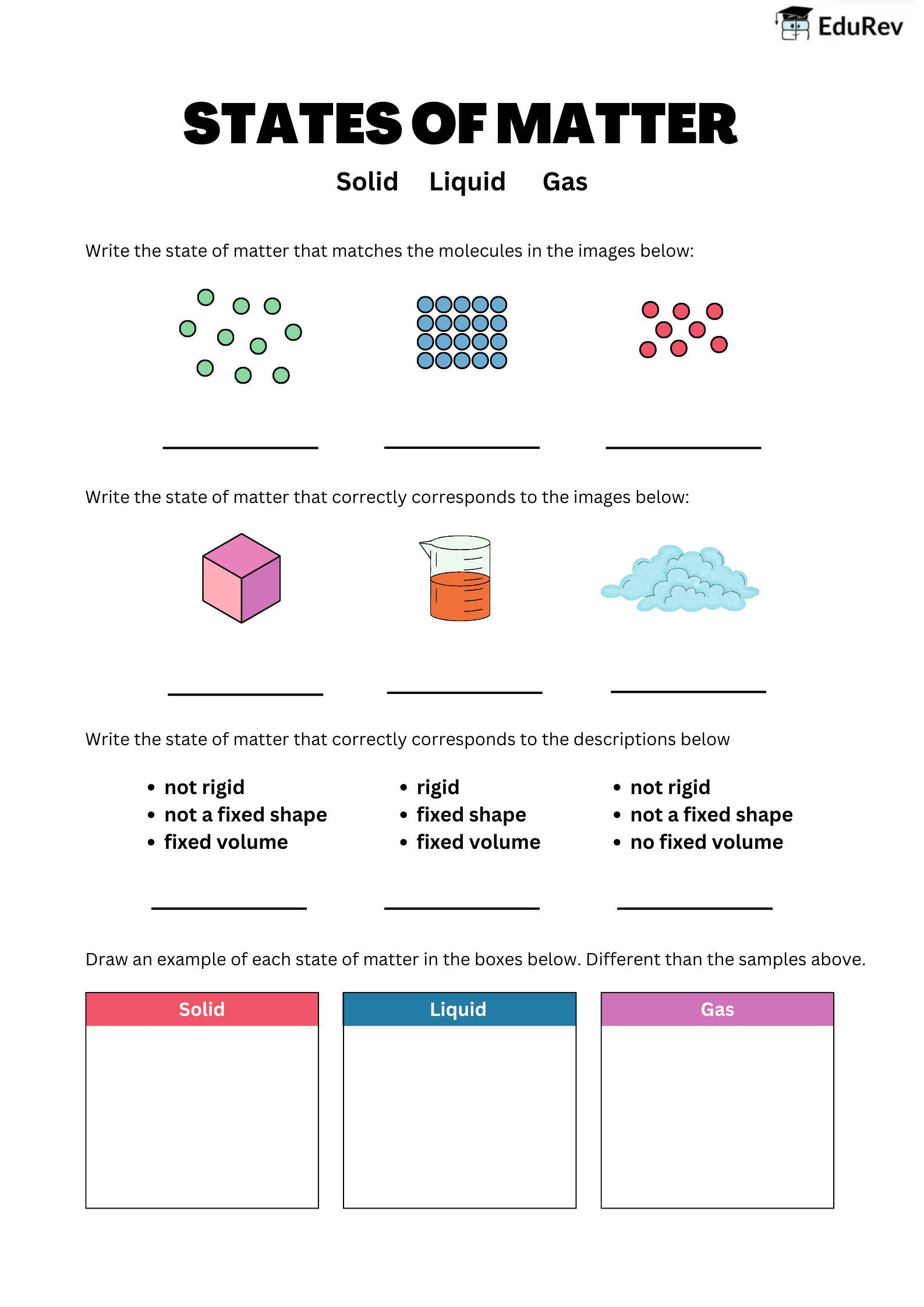Class 4 Exam > Class 4 Notes > Science Olympiad Class 4 > Printable Worksheet -1: Solids, Liquids & Gases
Printable Worksheet -1: Solids, Liquids & Gases | Science Olympiad Class 4 PDF Download

The document Printable Worksheet -1: Solids, Liquids & Gases | Science Olympiad Class 4 is a part of the Class 4 Course Science Olympiad Class 4.
All you need of Class 4 at this link: Class 4
|
48 videos|68 docs|51 tests
|
FAQs on Printable Worksheet -1: Solids, Liquids & Gases - Science Olympiad Class 4
| 1. What are the main differences between solids, liquids, and gases? |  |
Ans. The main differences between solids, liquids, and gases lie in their molecular arrangement and behavior. In solids, particles are tightly packed in a fixed structure, resulting in a definite shape and volume. Liquids have particles that are close together but can flow, giving them a definite volume but no fixed shape. Gases have particles that are far apart and move freely, which means they have neither definite shape nor volume and will expand to fill any container.
| 2. How do temperature changes affect the state of matter? |  |
Ans. Temperature changes can cause matter to change states. For example, heating a solid can provide enough energy for its particles to break free from their fixed positions, causing it to melt into a liquid. Conversely, cooling a liquid can slow down its particles, leading to solidification or freezing. Similarly, heating a liquid can increase the energy of its particles, allowing them to escape into the gas phase (evaporation). Thus, temperature plays a crucial role in the transitions between solids, liquids, and gases.
| 3. What are some common examples of each state of matter? |  |
Ans. Common examples of solids include ice, wood, and metals like iron. Liquids can be represented by water, oil, and alcohol. Gases include air, carbon dioxide, and helium. Each state of matter has distinct properties and applications in everyday life.
| 4. Can a substance exist in more than one state of matter? |  |
Ans. Yes, many substances can exist in more than one state of matter depending on temperature and pressure conditions. For instance, water can exist as ice (solid), liquid water, and steam (gas) under different environmental conditions. This phenomenon is known as the substance's phase change.
| 5. What is the significance of understanding the states of matter in science? |  |
Ans. Understanding the states of matter is significant in science as it helps explain a wide range of physical phenomena and processes. Knowledge of how materials behave in different states is essential in fields such as chemistry, physics, and engineering. It aids in the development of new materials, the design of industrial processes, and the understanding of natural phenomena.
Related Searches
















